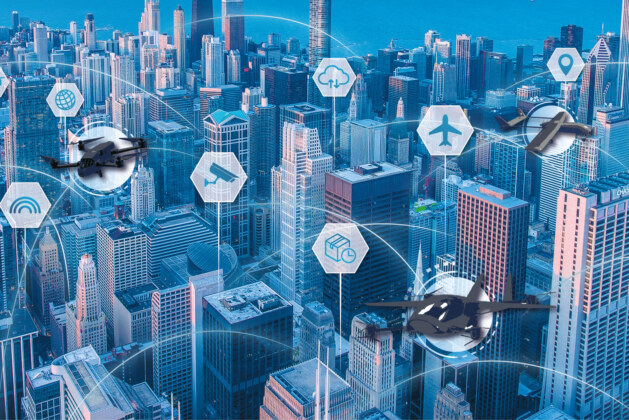As cities around the world grow at an unprecedented pace, urban planners and technologists are exploring innovative solutions to address congestion, pollution, and safety challenges. Smart cities, which leverage technology to improve the quality of life for citizens, are increasingly turning to drones and autonomous vehicles as critical tools for urban transformation. These technologies promise not only efficiency and convenience but also environmental sustainability and smarter resource management.
Table of Contents
Introduction
The concept of a smart city is no longer just a futuristic idea—it is becoming a reality in many parts of the world. By integrating advanced technologies like drones and autonomous vehicles, cities can address some of their most pressing challenges, from traffic congestion to emergency response. These innovations are not just about convenience; they are about creating urban environments that are safer, cleaner, and more efficient.
1. Role of Drones
Drones, or unmanned aerial vehicles (UAVs), have evolved beyond recreational use to become indispensable tools in urban planning and management.
Applications of drones include:
- Traffic Monitoring and Management: Drones provide real-time aerial views of traffic congestion, helping authorities manage road conditions and prevent accidents.
- Emergency Services: In disaster situations, drones can deliver medical supplies, survey damaged areas, and assist rescue operations where human access is limited.
- Infrastructure Inspection: Drones can inspect bridges, buildings, and power lines efficiently, reducing maintenance costs and improving safety.
- Environmental Monitoring: They track air quality, noise pollution, and urban heat islands, enabling cities to implement effective environmental policies.
By using drones, cities can collect data faster, respond to emergencies more effectively, and maintain infrastructure without putting human lives at risk.
2. Role of Autonomous Vehicles
Autonomous vehicles (AVs) are another cornerstone of smart cities. Equipped with advanced sensors, AI systems, and connectivity features, AVs have the potential to revolutionize urban transportation.
Key benefits of autonomous vehicles in smart cities:
- Reduced Traffic Congestion: Self-driving cars optimize traffic flow, reduce stop-and-go conditions, and can communicate with traffic signals to minimize delays.
- Enhanced Safety: Autonomous vehicles reduce human error, which is a leading cause of road accidents.
- Environmental Sustainability: Electric autonomous vehicles can lower carbon emissions, contributing to greener urban environments.
- Efficient Public Transportation: AVs can be used in buses, shuttles, and taxis, providing flexible, on-demand mobility solutions for citizens.
Autonomous vehicles not only offer convenience but also create safer and more sustainable urban transport networks.
3. Integrating Drones and Autonomous Vehicles
The real power of smart cities emerges when drones and autonomous vehicles operate in tandem.
- Traffic and Mobility Management: Drones monitor traffic conditions from above while AVs adjust routes in real-time to avoid congestion.
- Emergency Response: Drones can deliver critical supplies to an accident site while autonomous ambulances or emergency vehicles transport patients efficiently.
- Logistics and Delivery: Packages can be transported by AVs on the ground and drones in the air, ensuring faster delivery and reduced human labor.
- Data-Driven Urban Planning: Combining data from drones and AVs allows city planners to make informed decisions on infrastructure development, public safety, and sustainability initiatives.
This integrated approach ensures that cities operate smarter, respond faster, and provide better services to residents.
4. Challenges and Considerations
While the potential of drones and autonomous vehicles is enormous, there are several challenges to consider:
- Regulation and Legal Frameworks: Safe operation requires clear policies for airspace and road use.
- Privacy Concerns: Data collected by drones and AVs must be managed to protect citizens’ privacy.
- Cybersecurity: Autonomous systems are vulnerable to hacking, requiring robust security measures.
- Public Acceptance: Citizens must trust these technologies for widespread adoption.
Addressing these challenges is crucial for cities to fully harness the benefits of these advanced technologies.
Conclusion
The integration of drones and autonomous vehicles in smart cities represents a transformative shift in urban living. From reducing congestion and improving safety to enabling efficient delivery systems and environmental monitoring, these technologies promise a more sustainable, connected, and intelligent urban future. By planning carefully, addressing regulatory challenges, and focusing on citizen needs, cities can leverage drones and autonomous vehicles to create truly smart, livable, and resilient urban spaces.
Read More: Water Wars: How Scarcity Is Shaping Global Politics




